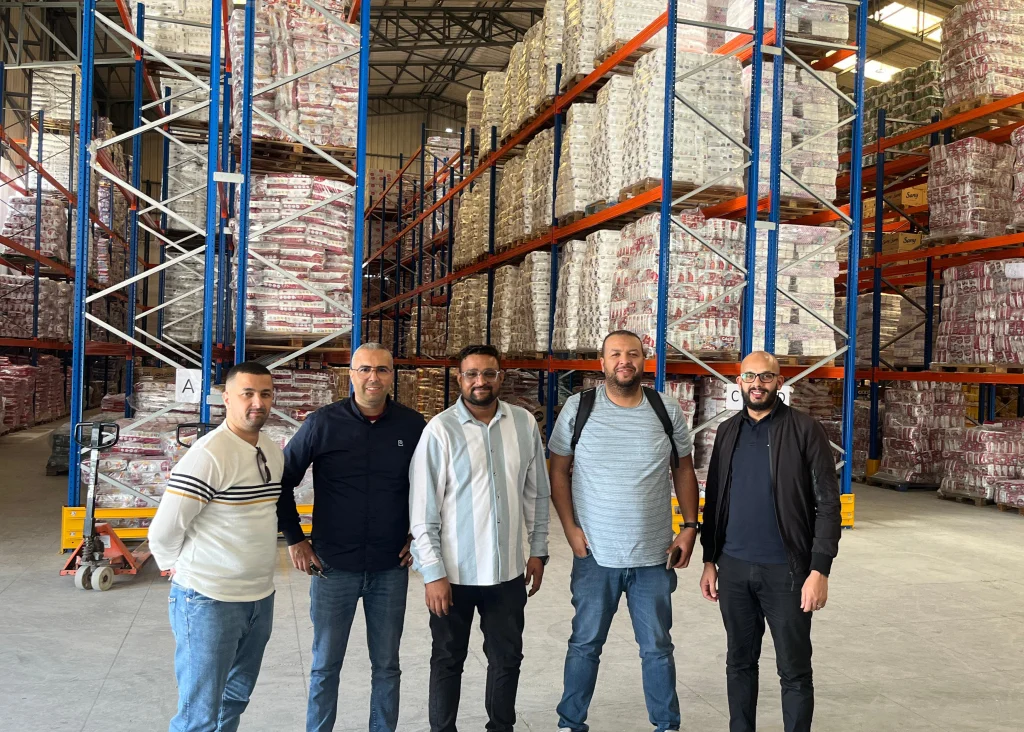Why Planogram Compliance Is Inseparable From Your Retail Strategy

Your planogram is your image. It has a major bearing on your offtake and rightfully so.
This may sound out of the blue and presumptuous; after all there are so many things that have an impact on how well you sell.
So, why a planogram? Let me explain.
Selling depends on a seller (you) having something that a buyer (consumer) wants. It’s all about the demand and consequent supply. This is the principal driving force behind any enterprise. That’s all well and good but that’s not all. If your consumers never see or have no idea about the existence of your products in-store, they obviously won’t be buying from you. You have to have a clear visual merchandising strategy about how you want to draw consumer attention in a store overflowing with products, yours and your competitors’.
Your planogram is a crucial part of that strategy. And planogram compliance is what you need to enforce in stores so that your strategy is successful. So that your retailers don’t inadvertently change product arrangement or share-of-shelf.
We shall delve deeper into planogram compliance as we proceed through this blog post.
What Is Planogram Compliance & Why It’s Important?
Planogram compliance is the practice of adhering to a specific set of guidelines or best practices that a brand expects from a retailer. Planograms are determined to ensure the best visibility of products towards bigger and better sales. It is extremely important because even though you may have discussed and then signed an agreement with your retailer about matters like share of shelf and space, things can still go awry.
For example, a competitor’s sales rep mistakenly adds a couple of their items to your space or the store keeper alters your product arrangement absentmindedly. These may be genuine mistakes, unintentional, but the consequences are potentially grave. Unnoticed products may sell late or even go past expiry while sitting incognito on shelves that would ultimately hurt your bottomline!
Therefore, it is important for your visual merchandising team or your sales reps to carry out periodic audits and fix any disparity with the established planogram. Remember, compliance is the retailer’s responsibility but enforcing it is always yours.
What Are The Benefits Of Planogram Compliance?
As already discussed, planogram compliance can lead to excellent offtake, the endgame of any business. To that end, there are many benefits worth mentioning as we have done below.
Enhanced revenue
A planogram compliant store displays your products in the arrangement and positions that you intended to result in optimised product visibility and consumer engagement. The most attractive and efficient store layout is one that aligns with consumer expectation and buying behaviour. As this improves experience, there develops a good chance for higher offtake, thus enhancing sales and in turn, revenue generation. Plus, it’s always rewarding to look at past performances to detect and resolve the pitfalls towards a more well-planned planogram, further enhancing sales.
Minimised stock outages
Your planogram’s purpose is pretty clear – product display and organisation in a manner that considers factors like popularity, sales history, and demand for your product. Planogram compliance also ensures the ordered placement of products in a store that helps easy monitoring for impending stock outages and drives in-time replenishment. When your retailers stick to your planogram, it becomes significantly easier for you to meet demand with supply, thus helping your sales performance and preventing missed opportunities.
An important point to remember is just because a shelf is empty, it doesn’t mean that there is a dearth of stock in the store; maybe the retailer isn’t compliant to your planogram or maybe a competitor product is on top of yours. In these situations, an automated and often AI powered planogram software could very accurately detect non-compliance for you to quickly fix the issue.
Shelf space management
When your products are arranged according to a predetermined strategic layout, it optimises the utilisation of shelf space by maximising every inch of space. Your products when following your planogram, will be placed according to popularity, size, and sales history. Apart from helping you and your retailer to keep an eye on available stock, it also maximises revenue potential. The results are better customer satisfaction and the mitigation of poor space management. If you don’t take control of your space and enforce compliance to your planogram, your retailer or competitors may do it for you with unsatisfactory results.
Accountability
Planogram compliance introduces a level of accountability among store owners or retail chains regarding your products. As they must follow a set structure or layout, there is a psychological urge to have everything in the right place and in the right manner. Apart from the benefits already mentioned above, stores can take ownership and you can address deviations better. This is an extremely advantageous position to be in where your retailer complies with you and assists your efforts and can lead to all the other benefits.
Planogram Compliance Checklist
A checklist is critically important to planogram compliance not just for in-store verification but also for sales rep/merchandiser/auditor efficiency. Such a list prevents an auditor from missing out on certain factors and providing an ultimately flawed report.
Depending on the brand’s priorities, the sales rep or merchandiser in charge of in-store auditing must check for the following:
- Are the shelves clean?
- Are shelves neatly organised on the basis of product type/category?
- Are products placed in the order demonstrated in the planogram?
- Are there even spaces between products or items?
- Are product labels facing the consumer?
- Are the shelves filled properly with items for visual appeal or are there unnecessary gaps?
- Do shelves with out-of-stock items mention so with a tag or a label?
- Are new products placed more prominently to attract attention?
- Are products surrounded by complimentary items to drive cross selling?
- Are upselling opportunities adequately highlighted or placed?
- Is the visual merchandising in the store in accordance with seasons or weather?
- Are store aisles clear of obstructions?
- Are signs, banners, and shelf dividers adequately visible?
- Is the lighting appropriately highlighting key areas in accordance with the planogram?
Additionally, brands must ensure their sales reps document feedback whenever available towards continuous improvement of their planogram.
How To Ensure Planogram Compliance?
As we have already established, planogram compliance is an integral part of your sales performance. It is left to you to enforce it in all stores that stock your products. Mounting a compliance program on that scale can be challenging, especially when there are hundreds of stores to contend with but a powerful strategy, when backed by well-thought-out tactics can go a long way towards encouraging compliance.
We discuss some of these in this section.
- Create Persona Through Profiling
Store profiling is a process that can potentially give you the most important insights to plan your planogram. Execution of planogram strategies is much more effective when you know the type of consumers that walk into a particular store. Once this enhances your in-store efforts such as lighting, product displays, or arrangement of products, your sales will more than likely go up!
- Consider Ratings
Ratings are the fundamental indicators of performance. Planogram compliance involves a lot of different tasks and activities that retailers need to adhere to a brand’s planogram. If you create a rating system for these activities, it will ensure that you are easily informed about where each store stands in terms of planogram compliance. This kind of transparency is powerful for identifying non-compliant stores at a glance.
- Trust Only Visual Evidence
Forms are important tools for record-keeping but they are not absolute because the human element involved is prone to erroneous inputs. There can be misses or downright inaccurate data entry in forms by sales reps, massively reducing audit reliability. To that end, visual records such as photos or videos are far more dependable and accurate. These ensure that your products are always placed in the right places, rearranged when necessary, and restocked before an outage happens. BeatRoute’s very own “shelf eye” technology is a step in this direction, bringing all sorts of AI backed capabilities with it.
- Leverage Artificial Intelligence
VM audits that include planogram assessment involve a sales rep going to a store, checking, and then documenting the state of affairs with regard to the planogram. This is not fool proof and also a lengthy process because humans take longer to process and record things. Alternatively, upgrading the auditing process with an AI can enormously accelerate and bolster the process. BeatRoute provides you with just that – AI supported VM audits to facilitate quick upload and analysis of data collected by your sales rep. When you save time and raise accuracy, you save costs, thus, not only boosting efficiency but also your bottom line.
- Stimulate With Incentives
Incentives are an age-old tactic by which to encourage retailers to follow your lead. If you have a planogram strategy in mind, then it needs to be followed by all retailers and once you offer them attractive benefits (incentives) for doing so, they would be more than motivated to place your products as they should be. On the other hand, penalising where necessary is also an option you can combine with incentives for those retailers who do not stay compliant to your planogram.
Afterword…
Planogram non-compliance issues are a major roadblock to getting your products adequately displayed and sold. Offtake depends on your consumers actually seeing your product in the sea of products in a store, making planograms incredibly useful. It is not for the retailers to alter and therefore, you must enforce it with regular audits, responsible sales reps, and a visual merchandising software that can identify planogram non-compliance.
Collaboration on all levels of the route-to-market is our strong suit and planogram compliance forms an important part of that idea.
If you are curious about how BeatRoute can help you improve your planogram compliance and increase the ROI from your display campaigns, check out our free demo!
About the Author
-
Apart from being a Senior Content Writer at BeatRoute, Soham is an avid reader of science fiction and suspense novels (Doyle, Christie, Brown or anybody great!) He also dabbles in historical narratives and wonders about our place in the universe. Cosmic viewpoints, Carl Sagan, and Neil deGrasse Tyson intrigues him. When not reading, you may find him spending his weekends or after-work hours watching a fulfilling movie with his family.
Use Goal-Driven AI to Achieve Retail Sales Uplift, Today!
Join enterprises in 20+ countries that trust BeatRoute, the globally dominant AI platform for sales force automation, field sales, DMS, and eB2B
Latest Insights & Articles
Here are the most impactful articles, platform updates, ebooks and reports for you.



